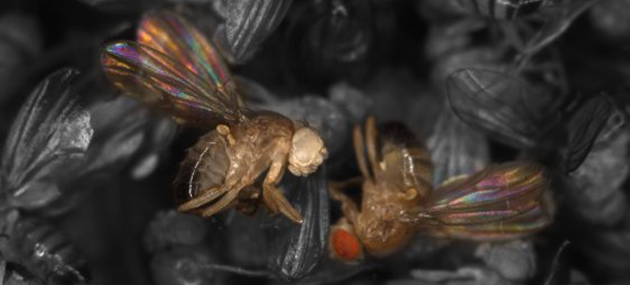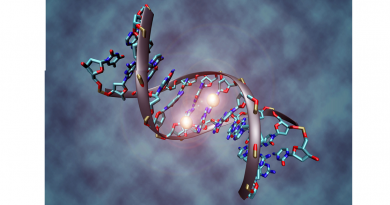Researchers discovered novel and unique neural signature for depression
 As parents, teachers and pet owners can attest, rewards play a huge role in shaping behaviors in humans and animals. Rewards – whether as edible treats, gifts, words of appreciation or praise, fame or monetary benefits – act as positive reinforcement for the associated behavior. While this correlation between reward and future choice has been used as a well-established paradigm in neuroscience research for well over a century, not much is known about the neural process underlying it, namely how the brain encodes, remembers and translates reward cues to desired behaviors in the future.
As parents, teachers and pet owners can attest, rewards play a huge role in shaping behaviors in humans and animals. Rewards – whether as edible treats, gifts, words of appreciation or praise, fame or monetary benefits – act as positive reinforcement for the associated behavior. While this correlation between reward and future choice has been used as a well-established paradigm in neuroscience research for well over a century, not much is known about the neural process underlying it, namely how the brain encodes, remembers and translates reward cues to desired behaviors in the future.
A recent study led by Dr. Sameer Sheth, professor and vice chair of research in the Department of Neurosurgery at Baylor College of Medicine, director of the Gordon and Mary Cain Pediatric Neurology Research Foundation Laboratories and investigator at the Jan and Dan Duncan Neurological Research Institute (Duncan NRI) at Texas Children’s Hospital, identified beta frequency neural activity in the anterior cingulate cortex (ACC) of the brain’s frontal lobe as the key neural signature underlying processes associated with recognizing rewards and determining subsequent choices and, thus, shaping future behaviors.
The study is published in Nature Communications.
The authors report that this neural signature is altered in patients with depression, opening an exciting possibility of using these neural signals as a new biomarker and a potential innovative avenue for therapy.
Anhedonia is a cardinal symptom of depression and other psychiatric conditions
Human beings derive pleasure through various physical or mental activities, sensory experiences and interactions with family and friends.
Individuals with depression often experience feelings of hopelessness, sadness or despair for prolonged periods due to disengagement and anhedonia – a medical term meaning loss of the ability to feel joy or contentment in activities and things that they once found pleasurable, all of which has a profound negative impact on their quality of life.
Anhedonia is also associated with other psychiatric and neurological disorders such as schizophrenia and bipolar disorder, substance abuse disorder, anxiety and Parkinson’s disease. Traditional antidepressants and standard treatments often fail to adequately address this symptom in individuals with severe treatment-resistant depression and other conditions. A better understanding of anhedonia can guide the development of targeted and more effective treatments for depression and related conditions.
Reward bias response is regulated by beta activity in the frontal lobe

To identify the underlying neural basis for anhedonia, Sheth and team recorded and analyzed neural activity from four brain regions of 15 patients with medication-resistant epilepsy who were undergoing invasive monitoring to localize the zone from where their seizures originated.
As their brain activity was being monitored, these patients performed a perceptual discrimination task called the probabilistic reward task (PRT), a well-validated behavioral task that objectively measures anhedonia by observing subtle changes in behavior related to reward.
“We found that the unequal assignment of reward between two correct responses in this task produced a response bias toward the more frequently rewarded stimulus,” said lead author Dr. Jiayang Xiao, who conducted this study as a graduate student in the Sheth lab. “We found that based on feedback, most individuals modified their subsequent responses to make choices that were likely to get rewarded, irrespective of the accuracy of their answers.”
Moreover, they found a specific signal – neural oscillations in the beta frequency range – originating from the anterior cingulate cortex (ACC) in the frontal lobe of the brain, showed a consistently strong and positive correlation with the reward bias behavior and tracked closely with the receipt of rewards and their value. Further, they found that this specific brain region was engaged in evaluating both reward stimuli and outcomes, potentially acting as a critical node with a common mechanism for reward assessment.

“Our study has addressed a longstanding fundamental question in neuroscience – which specific brain region and signal regulates the classic reward bias response, a famous example of which is the Pavlovian conditioning where dogs learned to associate the sound of a ringing bell to food,” said co-senior author Dr. Benjamin Hayden, professor of neurosurgery at Baylor.
Reward bias response is altered in patients with treatment-resistant depression
Next, Sheth and his team conducted the PRT in four individuals with severe treatment-resistant depression. They found that reward processing in the ACC was altered in this group. These individuals did not exhibit the typical behavioral response of favoring choices that are more frequently rewarded. This observation suggests a lack of reward-oriented anticipation and that their choices were less driven by reward feedback. Consistent with this change in reward bias behavior, beta activity in the ACC region was reduced and delayed in these individuals.
“In this study, we identified beta activity in the ACC as a potential biomarker for anhedonia,” said Sheth, also a McNair Scholar and Cullen Foundation Endowed Chair at Baylor.
Studying the beta activity in the ACC could have many potential benefits, including improving diagnosis and monitoring symptoms of patients with severe depression and other anhedonia-related psychiatric conditions.
Moreover, our findings present an exciting possibility that modulation of the ACC beta activity might be effective treatment anhedonia, a hypothesis we plan to test in future clinical trials.”
The neurotechnology improvements of this research have advanced at a pace not previously possible due in part to funding by the National Institutes of Health Brain Research Through Advancing Innovative Neurotechnologies Initiative, or the BRAIN Initiative.
“This study exemplifies how BRAIN-funded research is already having an impact in the clinic today,” said Dr. John Ngai, director of the NIH BRAIN Initiative. “The innovations in data collection and individualized deep brain stimulation demonstrated in this study may enable a new generation of precision treatments.”
Information about other authors involved in the study, their affiliations and their declaration of interest can be found here. This research was supported by the National Institutes of Health by award numbers UH3 NS103549, K01 MH116364, R21 NS104953, UH3 NS100549 and R01 MH114854; and the McNair Medical Institute at the Robert and Janice McNair Foundation. The researchers would also like to thank the Cullen Foundation, the Jan and Dan Duncan Neurological Research Institute and the Gordon and Mary Cain Pediatric Neurology Research Foundation Labs at Texas Children’s Hospital.
Follow From the Labs on X @BCMFromtheLabs and Instagram!



